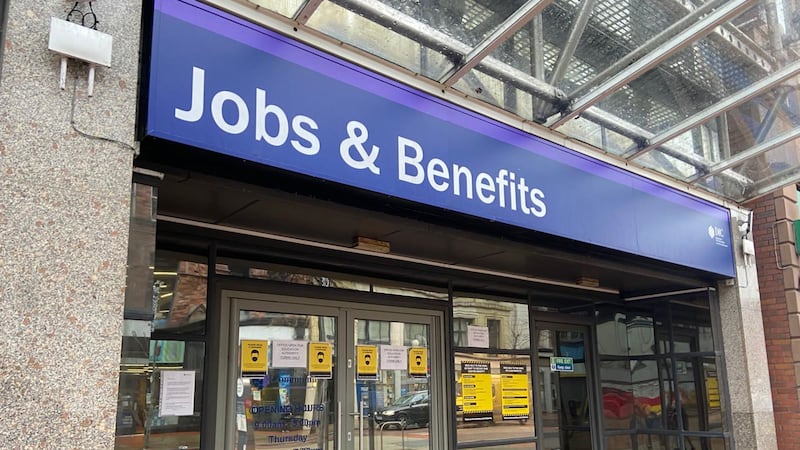THE number of people in the north claiming unemployment benefits has increased for the first time since May 2020, new official data suggests.
But the latest labour market report for Northern Ireland has revealed some signs of recovery, with the total number of paid jobs on the rise.
Considered by the UK’s Office of National Statistics (ONS) as the best single indicator of the state of the labour market, HMRC's payroll data showed PAYE jobs increased by 3,554 to 746,082 in the first two months of 2021.
But that total is 7,758 jobs down on March 2020, when it hit a peak of 753,840 jobs.
Meanwhile the claimant count rose to 58,900 in February 2021.
The measure, which includes people claiming jobseeker’s allowance and universal credit, principally for being unemployed, is now up 29,300 on 12 months ago.
While the count rocketed in April and May 2020 in the wake of the first lockdown, it has been gradually coming down ever since. The increase in February is the first monthly increase in nine months.
The Northern Ireland Research and Statistics Agency (NISRA) put the increase down to the number of people losing their jobs in February or having their hours cut, reducing their earnings and putting them in the territory of needing benefit support.
It also said that the count may now include some people who were previously not eligible for universal credit due to partner earnings, but were now eligible as a result of work allowance increases.
February’s labour market report showed 10,650 redundancies proposed in the previous 12 months, with 5,770 redundancies confirmed. That measure is restricted to cases where employers cut their workforce by at least 20.
With tens of thousands of people in the north still on the UK Government’s furlough scheme, the official unemployment rate remains relatively low at 3.7 per cent, below the UK rate of 5 per cent.
But the north’s economic inactivity rate is rising and now stands at 28 per cent, well above the UK average of 21 per cent.
A separate survey published on Tuesday - the Quarterly Employer Survey (QES) - found the number of employee jobs fell by 2,400 in the fourth quarter of 2020, with the total falling by 9,800 from the second quarter to the fourth.
Ulster Bank’s chief economist Richard Ramsey said the QES exposed the gulf between the public and private sector – with job numbers moving in opposite directions.
Private sector jobs fell by 3,650 in Q4 2020 and by 10,290 since the first quarter of 2020.
Total private sector jobs (558,400) are now at their lowest since the second quarter of 2018.
Meanwhile public jobs rose in Q4 2020, hitting a six-year high of 212,210.
The QES suggests 5,510 fewer retail jobs in the north between the fourth quarter of 2019 and Q4 2020, with administrative and support service roles falling 5,460 over the same period.
Hospitality jobs were down 3,540 over the year, with manufacturing jobs down 830.





